The working principle of the chiller circulation pump is based on a series of precisely coordinated steps. Firstly, a specific volume of water is introduced into the stainless steel water tank of the chiller. The chiller's refrigeration system, which typically employs a refrigerant cycle (consisting of compression, condensation, expansion, and evaporation processes), cools the water to a low temperature. The refrigerant absorbs heat from the water in the evaporator, causing the water temperature to drop. Once cooled, the chiller circulation pump, with its specially designed impeller and motor assembly, pressurizes the water. This pressurization increases the water's potential energy, enabling it to flow through the piping system and reach the semiconductor laser equipment that requires cooling. The pump's impeller rotates at a specific speed, creating a centrifugal force that propels the water forward, ensuring a continuous supply of cooled water to the laser equipment.
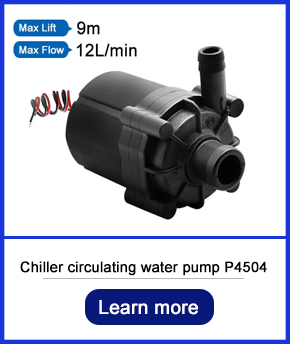 | 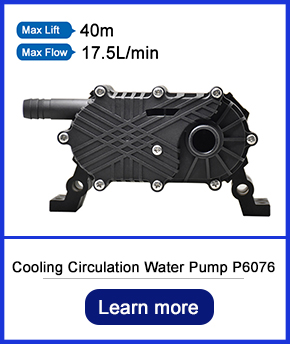 | 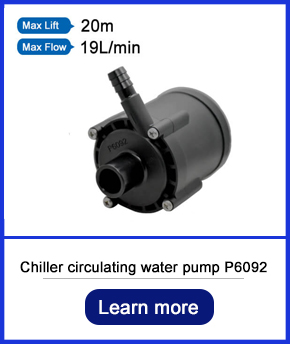 |
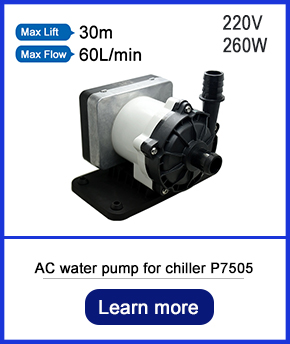 | 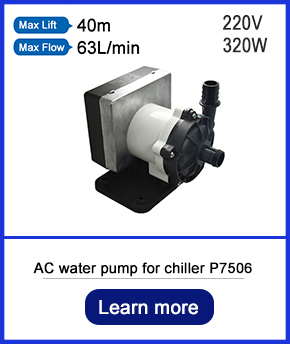 | 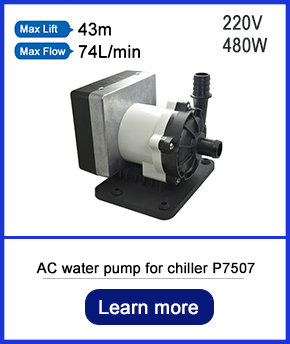 |
In the context of chiller circulation pumps, the factors of pump flow and water flow are of utmost importance, yet they are often overlooked. The pump flow of the chiller circulation pump is directly related to the cooling capacity of the compressor. A higher pump flow rate indicates that a larger volume of cooled water can be delivered per unit time, enhancing the cooling efficiency. The water flow, on the other hand, represents the chiller's ability to remove heat from the laser equipment. The speed of the water flow is determined by the pump head pressure of the laser chiller. For instance, if the pump flow is insufficient (as seen in some low-quality laser chillers with a pump flow of less than 10 liters per minute), the water flow rate will be sluggish. Consequently, the cooled water in the tank cannot be circulated to the laser equipment promptly. This leads to a situation where the heat generated by the laser equipment cannot be effectively cooled and dissipated. A common example is when a laser chiller with a nominal cooling capacity of 1600W is connected to a 75W semiconductor laser marking machine. Despite the chiller's rated capacity, if the pump flow is inadequate, the laser machine may still overheat, even though the chiller's temperature display shows a normal value. This clearly demonstrates the critical role of proper pump flow in ensuring the effective cooling of laser equipment.
When the pump head pressure of the chiller circulation pump is too low, it has several negative consequences. Firstly, it leads to poor heat dissipation of the laser module. The insufficient pressure prevents the water from flowing at an optimal rate, resulting in heat accumulation in these critical components. This, in turn, can cause overheating and damage to the laser module, directly impacting the performance and service life of the laser equipment. Secondly, chillers with low pump head pressure often lack a water filter. The reason is that the filter adds a certain resistance to the water flow. In systems with already low pump head pressure, this additional resistance can further reduce the water flow rate or even prevent the chiller from operating normally. Without a water filter, impurities in the water can easily accumulate, leading to clogging and scale formation in the pure water of the laser water chiller. This not only affects the cooling efficiency but also poses a risk of damaging the internal components of the chiller and the laser equipment.
Comparing different types of chiller circulation pumps reveals significant differences in performance and suitability. High-quality pumps with advanced impeller designs and efficient motors offer higher pump flow rates and greater pump head pressures. For example, some premium models can achieve pump flows of 20 liters per minute or more, ensuring rapid and effective cooling of laser equipment. In contrast, lower-quality pumps may have pump flows as low as 5 liters per minute, resulting in suboptimal cooling. Additionally, pumps with better sealing and corrosion-resistant materials have longer service lives and require less maintenance. They are also more suitable for use with different types of laser equipment, as they can handle a wider range of operating conditions. Price is another factor to consider. While high-performance pumps may have a higher initial cost, their long-term benefits in terms of improved cooling efficiency, reduced downtime, and extended equipment life often outweigh the investment. Understanding these differences can help users select the most appropriate chiller circulation pump for their specific laser equipment cooling requirements.
In conclusion, the chiller circulation pump is a vital component in the cooling system of semiconductor laser equipment. Its working principle, the importance of pump flow and water flow, and the impact of pump head pressure all play crucial roles in ensuring the efficient cooling and optimal performance of the laser equipment. By understanding these aspects and considering the differences between various types of pumps, users can make informed decisions when selecting a chiller circulation pump. Regular maintenance and monitoring of the pump's performance are also essential to prevent issues such as poor heat dissipation and clogging, thereby prolonging the service life of the laser equipment and the chiller circulation pump itself.
Address:No.30, Dapu lndustrial Street, Changping, Dongguan, Guangdong, China
Tel: +86-186 7628 8117